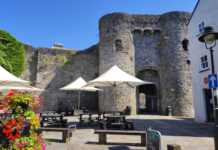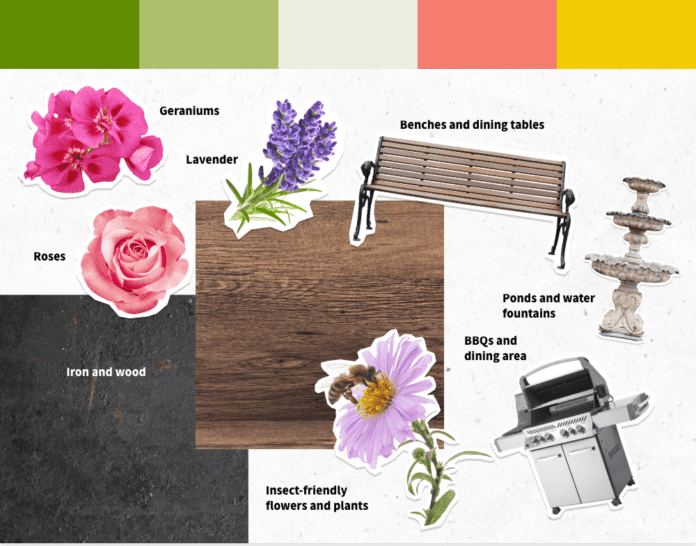Missing your holiday? Here’s what you need to recreate the world’s most beautiful countries in your back garden
- One of the worst things about travelling is the post-vacation blues. However, a garden refurb project inspired by some of the world’s most scenic countries means you can have a slice of paradise in your back garden.
- Some of the world’s most desired aesthetics, from the courtyards of Italy to a classic English country garden, have been boiled down into 10 simple mood boards to inspire your next garden design project.
- Each defining feature of some of the world’s most beautiful landscapes has a purpose, a cultural meaning and can easily be recreated in your back garden – whether that’s through flowers, outdoor décor, or hardscaping.
There comes a time of year when everyone looks at booking a well-deserved getaway in their favourite part of the world. Most would agree that the main downside to travelling is snapping back to reality when you return home.
Toolstation has researched gardens across 10 of the most beautiful countries worldwide and created the ultimate guide to recreate this in your own garden. They’ve crafted 10 garden mood boards inspired by the countries – detailing everything from the plants needed, to the outdoor furniture and colour schemes.
Each mood board summarises the colour palettes, materials, plants, flowers, furniture, and décor to help you achieve a garden inspired by your favourite corner of the world. This comes along with tools you may need, as well as comments from an expert landscaper who advises what actions and skills are needed to achieve the desired garden style.
You can view the full piece here: https://www.toolstation.com/content/around-the-world-in-10-gardens
England
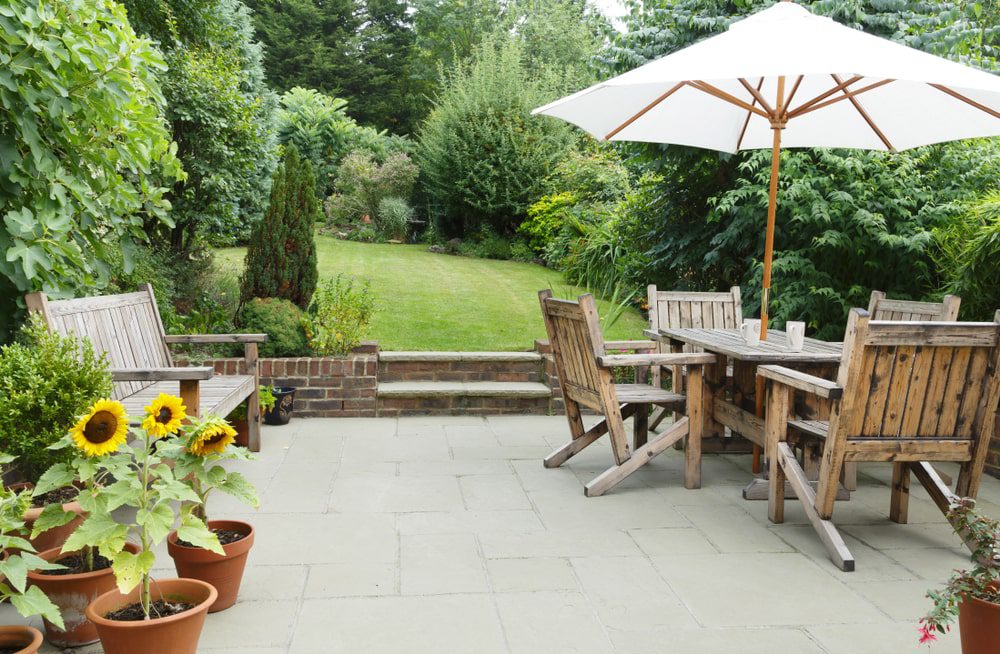
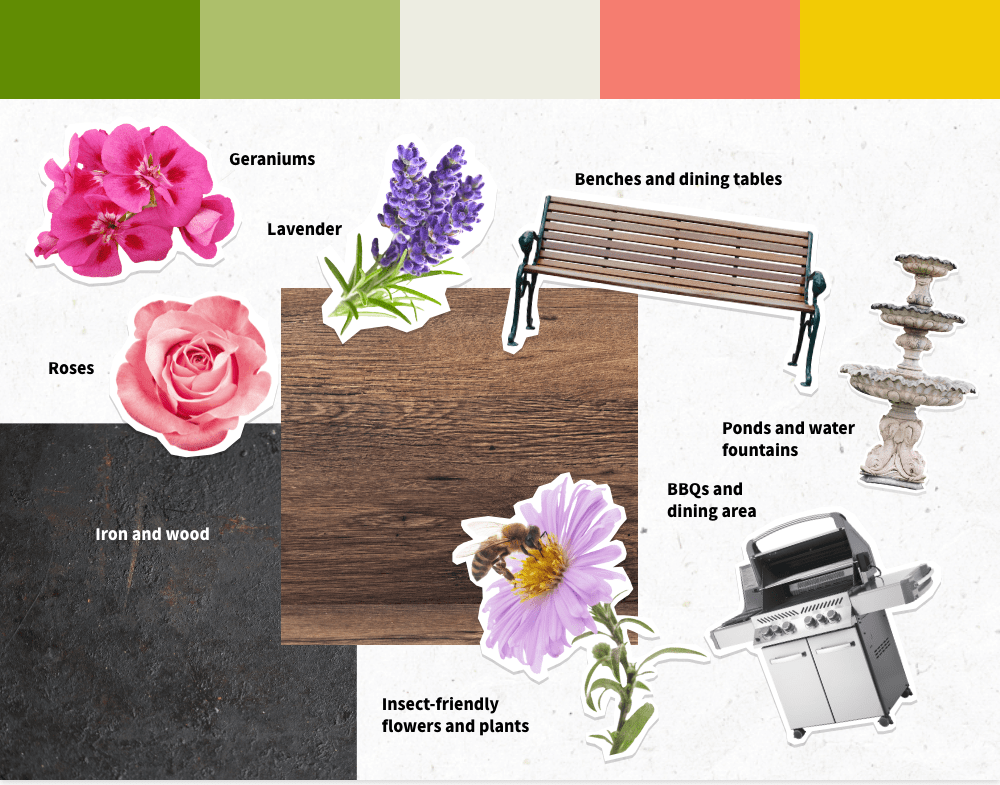
Toolstation suggests using traditional, brightly coloured flowers including roses (the national flower of England), geraniums, trellis plants, perennials, and full flowery borders with lots of colour and texture (e.g., lavender).
There’s lots of emphasis on flowers and biodiversity; meaning flowers are not just selected for colour, but specifically chosen to encourage local insect life such as bees and butterflies to thrive.
Winding stone paths, grassy areas and letting flowers grow wildly to avoid harsh neat lines will help to achieve the desired look, as will water features such as ponds and stone fountains. As for décor, opt for classic, timeless furniture – avoiding modern plastics and instead using outdoor furniture preferably made from iron and wood.
Japan
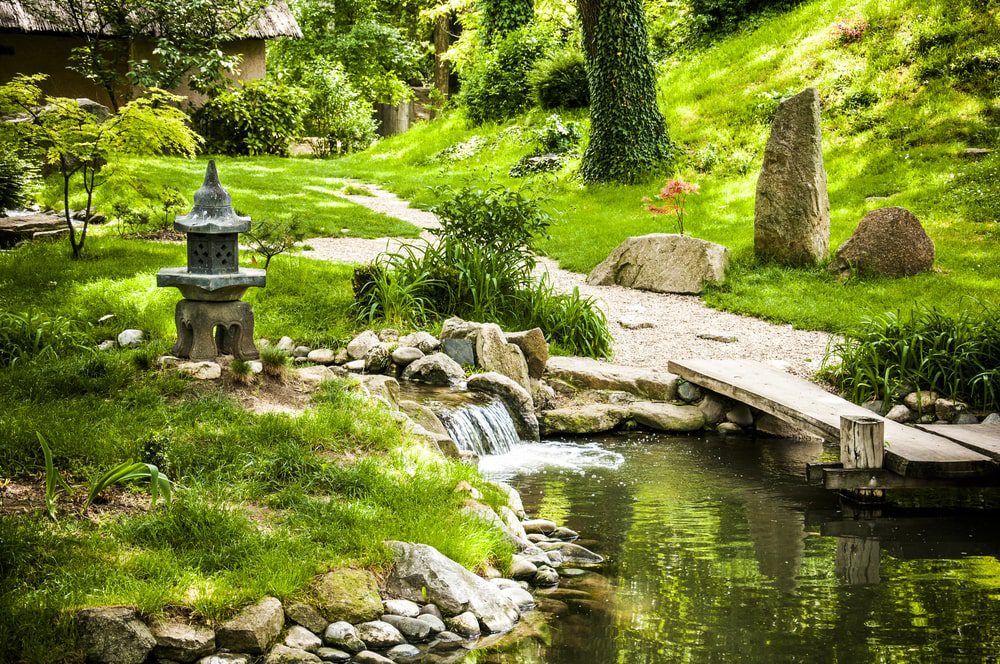
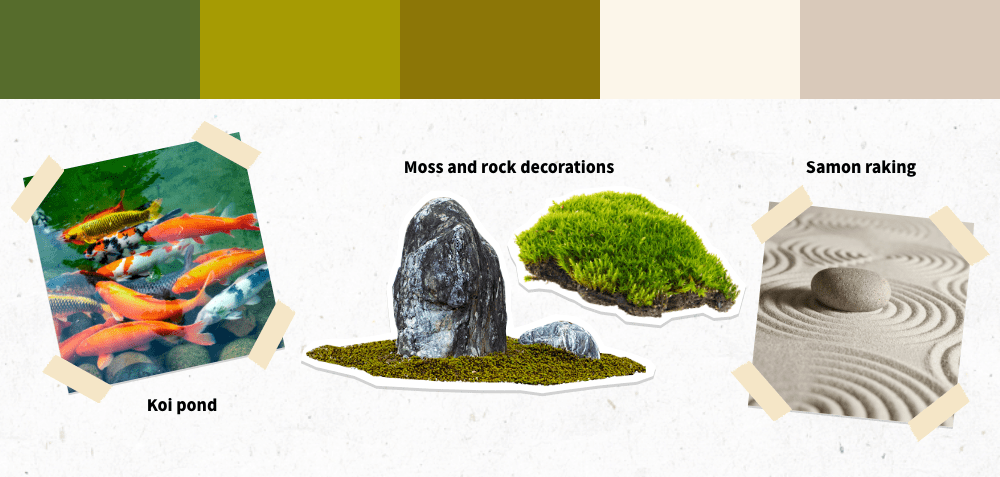
Japanese is known for its zen style and dry landscape gardens that are designed to promote calmness, serenity, and meditation.
Many aspects of the zen garden style are perfect for renters and homeowners alike as they commonly stay away from using bright colours and mainly focus on implementing different textures like stone, gravel, and moss – all of which can be temporary fixtures. The use of stone can also be seen in other easily obtainable traditional Japanese garden features like the stone triad. This stone setting presents as a deity stone in the middle and supporting stones on either side (sanzon-ishigumi). Other ornamental additions include stone lanterns shaped as pagodas (pagoda pillars).
Make use of natural elements, such as encouraging the sounds of running water to add to the calming atmosphere. This can be achieved by installing a bamboo deer scarer or a pond. Traditionally, ponds found in Japanese gardens will be home to Koi fish, and this can also be achieved in a garden if you have the budget and the time to provide the right care.
Many Japanese gardens are built around the idea of wabi-sabi: finding beauty in imperfection. This means you should be encouraging natural ageing and wear and tear to suggest permanence and contribute to the natural, zen atmosphere.
Greece
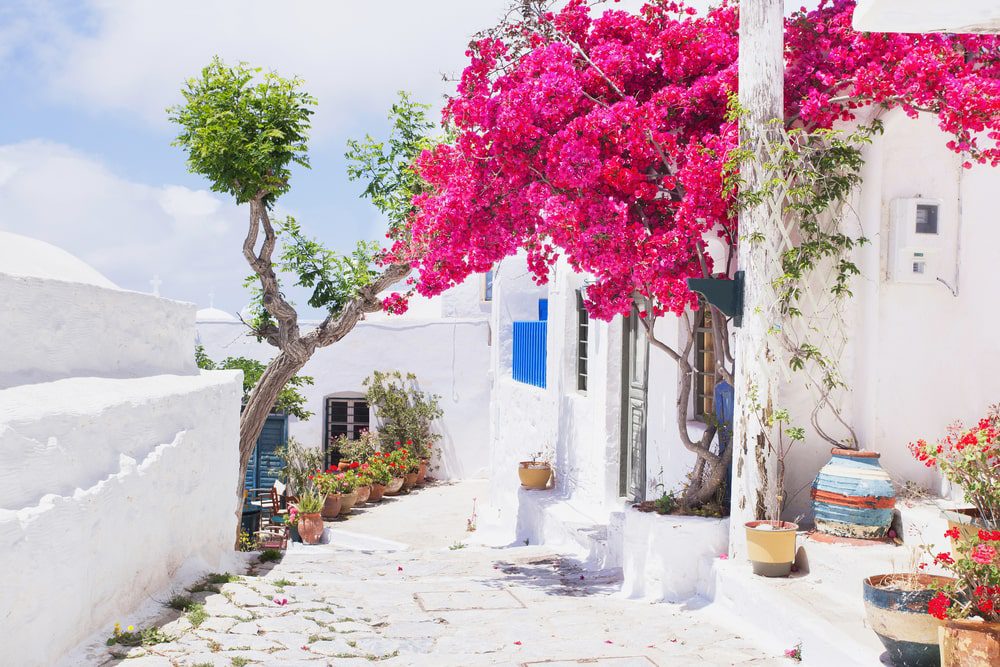
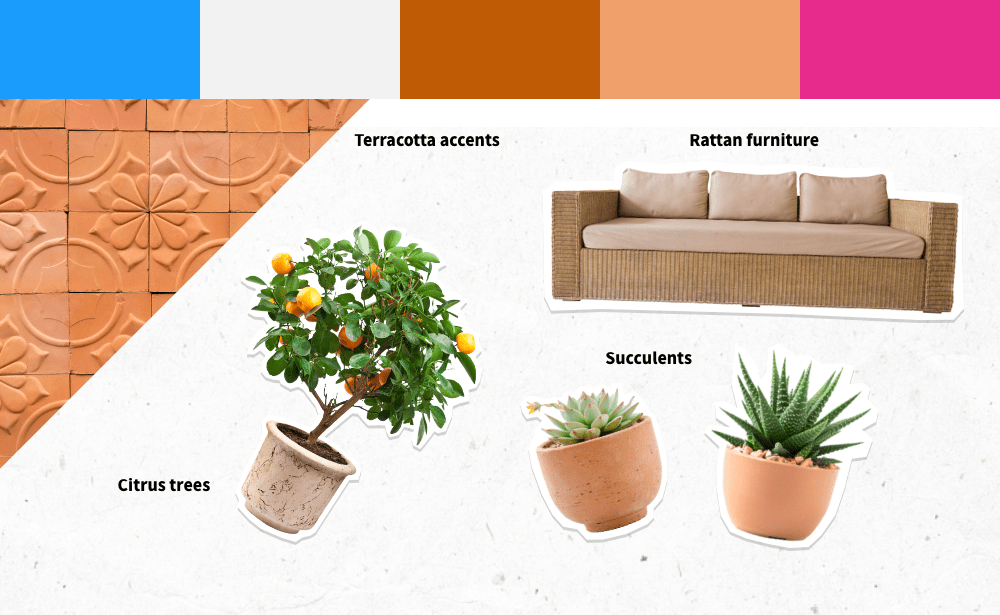
Since Greek culture is all about family, outdoor seating and dining areas are central to the Grecian Garden. Opt for large dining tables and chairs, preferably of more natural, rustic-looking materials like rattan. With such a focus on outdoor dining, a built-in BBQ or outdoor kitchen is advised.
To help recreate the classic, white-washed houses of Cyclades, use bright white for walls, fences, and panelling. It will also help reflect the sun. The strong white can be contrasted with dusky colours and terracotta accents to represent ancient Greece.
Pops of blue can be added via bright tiles and oversized urns and planters to provide a nod to the classic blue trim found on the front of traditional Greek homes that was caused by a cleaning agent known as Loulaki mixing with the limestone.
For plants, use drought-tolerant succulents and citrus trees. Lemon trees can be grown in the UK when planted in a pot and brought inside for the winter.
Mexico
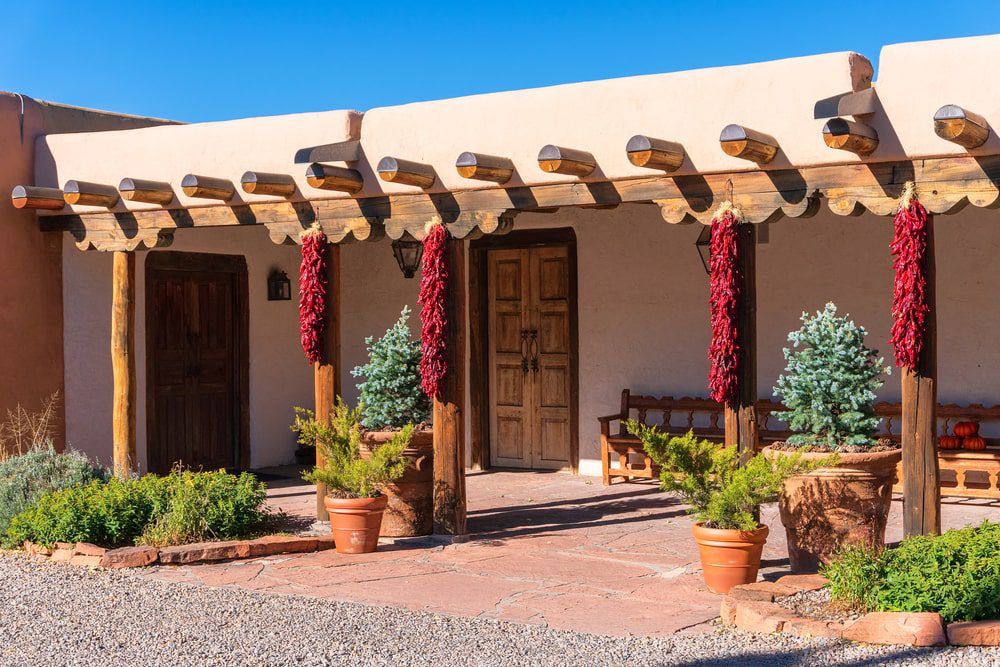
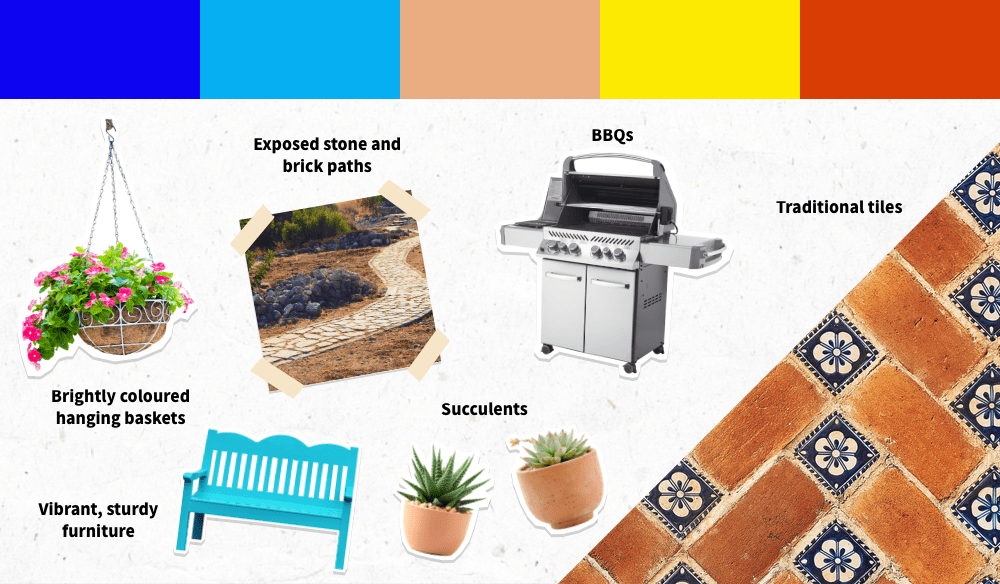
Known for its rich culture and colourful festivals, a Mexican-inspired garden involves lots of bright colours and areas dedicated to outdoor dining as a family. Use lots of blue, pink, and yellow, whether that’s through ceramic tiles or flowers like pink Dahlias (Mexico’s national flower), Marigolds and Mexican sunflowers.
Cacti are very common in Mexican landscapes but don’t do well in milder climates. For a Mexican-style garden in the UK, planting succulents creates a similar look.
Opt for a more rustic style, with exposed brick, and gravel paths and making use of woven textures. This could be brought about by outdoor tapestries and rugs.
In terms of furniture, the focus is ensuring enough seating for all the family. This could be achieved by installing a large wooden decking area. With such a big focus on outdoor dining, make an outdoor oven or a built-in BBQ the focus of the garden.
Thailand
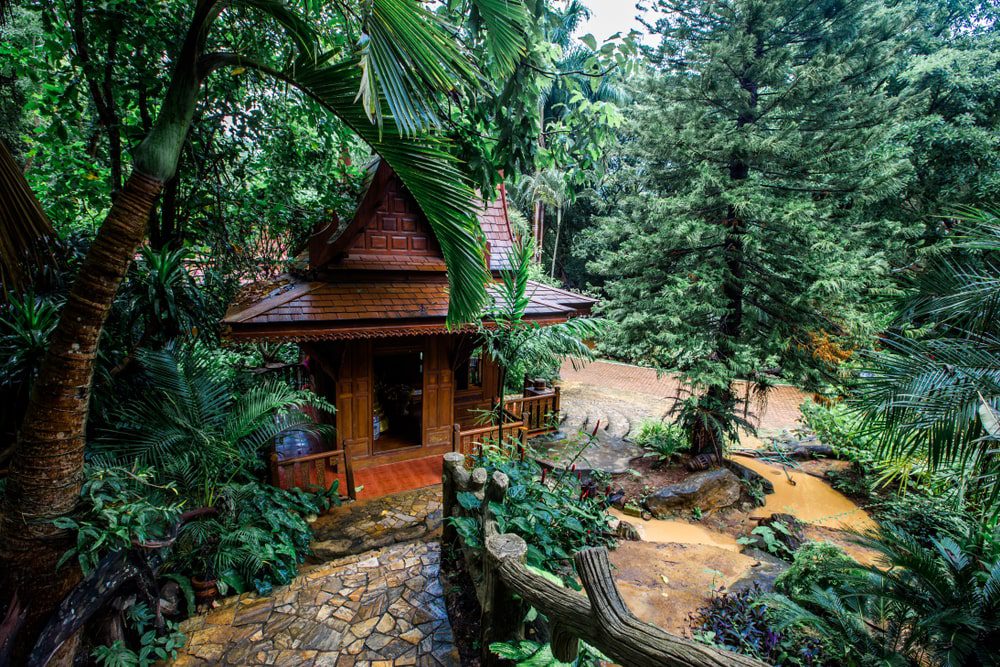
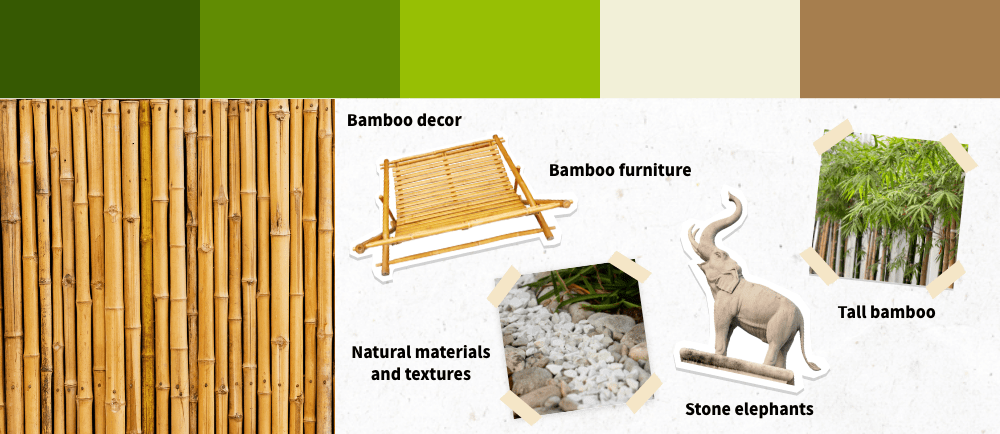
Like Japan, a Thai-inspired garden should make use of the natural elements. Water is traditional, and can be implemented through ponds, fountains, and small water features. Other natural materials that create a Thai-styled garden include stone and bamboo and can be used through ornaments, walls, panelling, fencing and other décor. Stone elephants are also common due to being a symbol of good luck in Thai culture.
For plants, there is less of an emphasis on flowers and more of a focus on palm trees, bamboo, and long grass to help bring about a tropical feel.
Italy
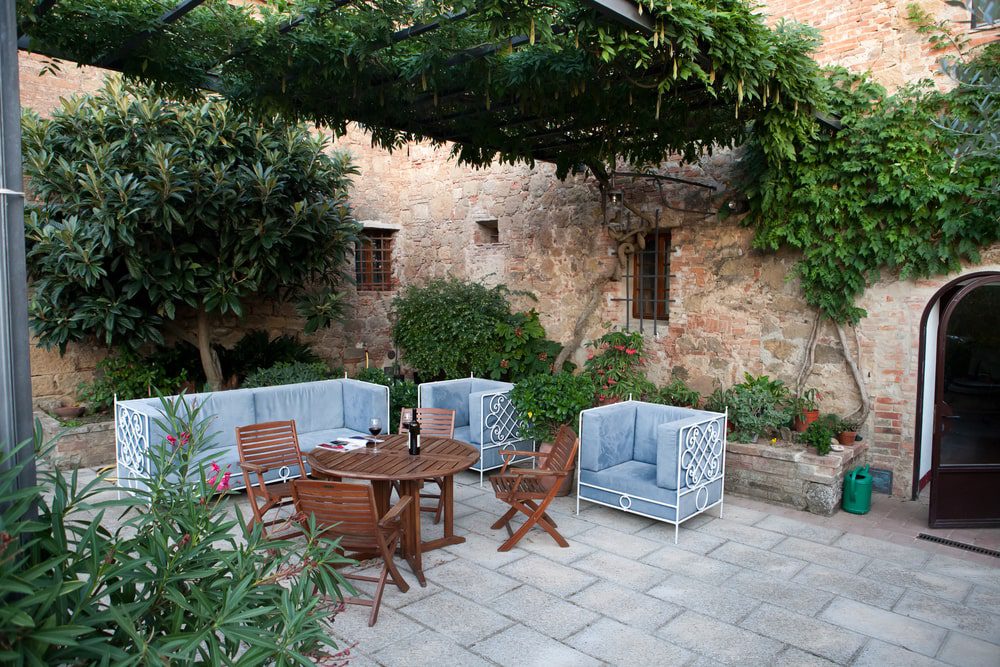
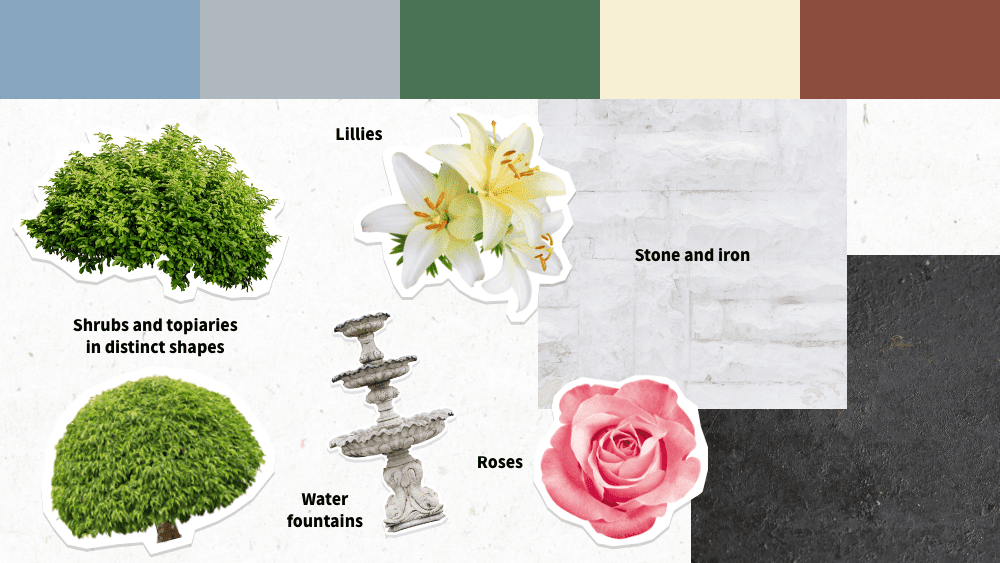
Opt for a warm colour palette making use of ecru, as well as shades of brown and ivory. When adding greenery, add evergreen plants like shrubs and topiaries that last all year round. For flowers, it’s lilies (their national flower) and even roses that will help build the desired aesthetic.
Suitable materials include iron and stone which can be implemented through hardscaping. This can involve statues, stone paths, fountains, and anything else that ties in with a classical, Renaissance style. Pottery would also be well suited for an Italian-style garden, as would subtle furniture additions to create secluded seating areas.
Morocco
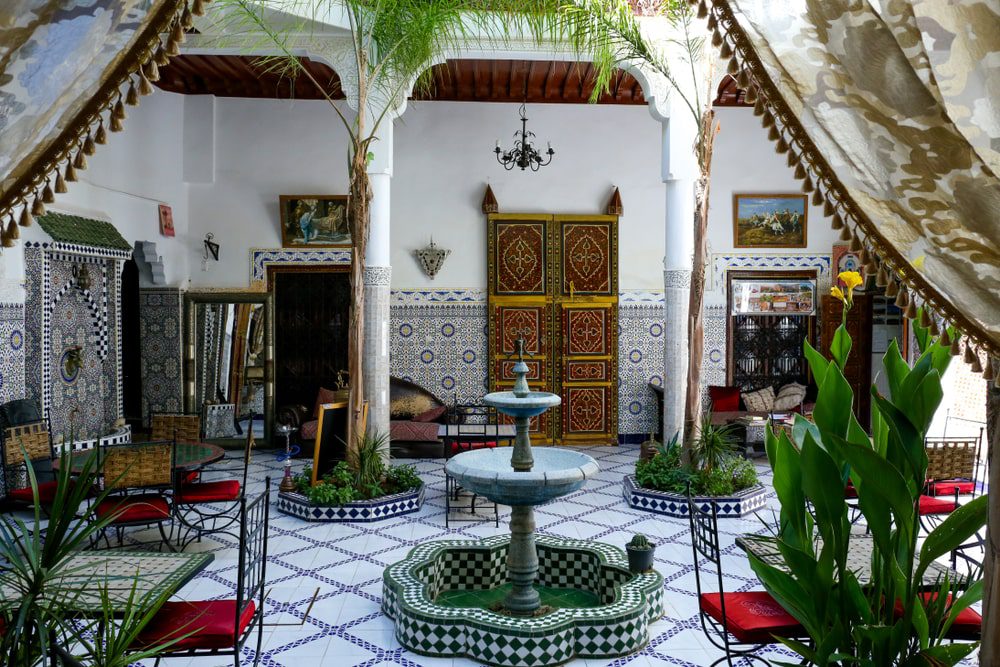
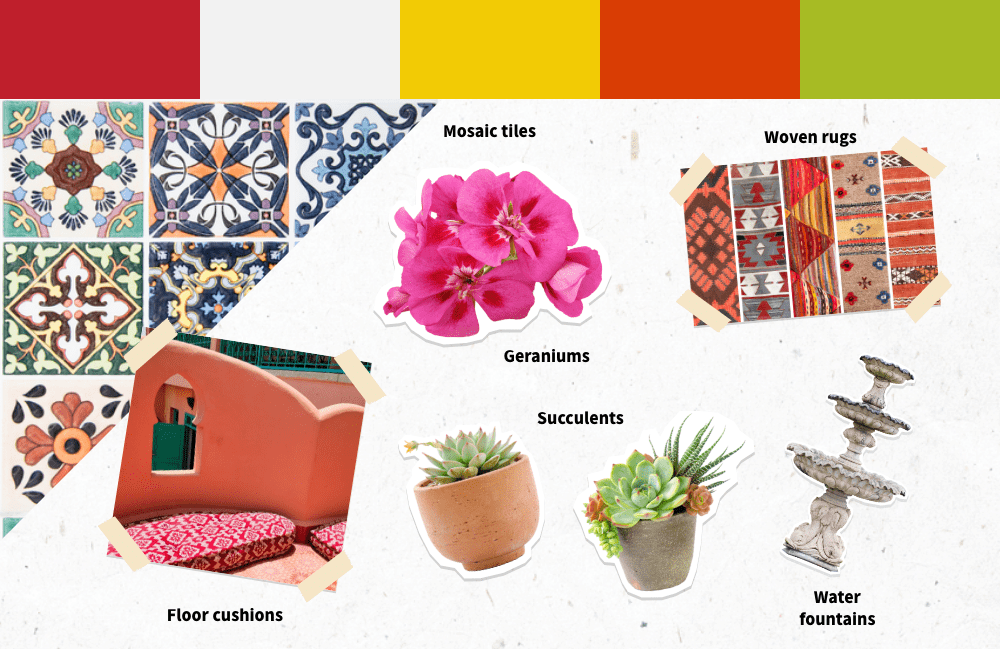
Morocco is known for its Riads – traditional courtyards in the centre of the home. This can be replicated using warm colour palettes for fences and walls like cream, brown and light yellow. Brightly coloured accents are common in the Moroccan style due to cultural superstitions surrounding magic. For example, doors are painted blue to ward off spirits. This can be encompassed within the garden design as a nod to the design’s culture and origin.
Moroccan gardens focus on bringing the inside outside, so opting for outdoor woven rugs, low tables and floor cushions are suitable for this style. Additionally, there is an emphasis on natural elements like florals and water. Florals can be represented by adding flowers commonly associated with Morocco like Geraniums. Cacti and Aloe are also linked to Moroccan landscapes. They don’t grow well outside in UK climates but will thrive in indoor spaces like conservatories and greenhouses.
Water fountains and ponds are a great way to represent the water element, and help create a calm and serene atmosphere which, in Moroccan culture, is linked to the philosophy of paradise and represents the bounties provided by Allah.
France
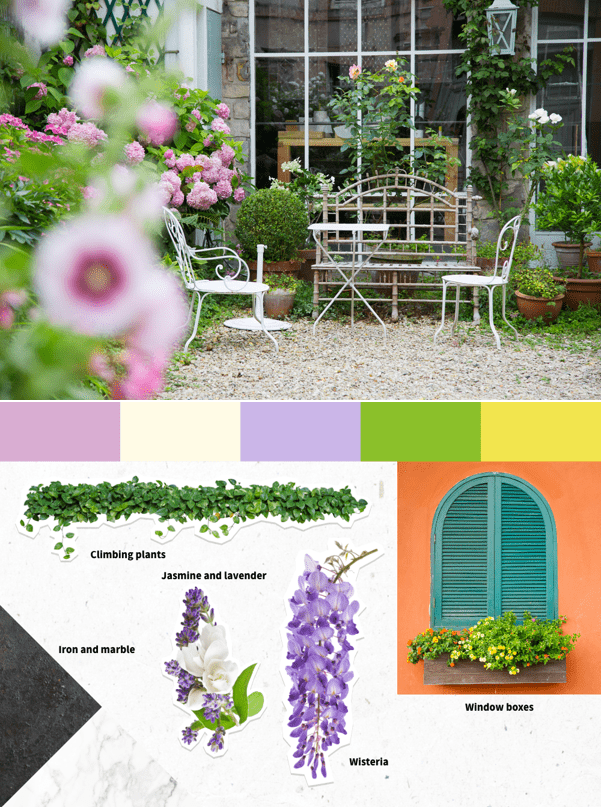
Beiges and faded tones can provide the perfect paint colours, as well as white or lavender for a brighter look. Often well-kept, French-styled gardens aim to be the perfect setting for outdoor dining. Opt for iron or marble bistro furniture, simplistic water features and fragrant herbs and flowers like jasmine, lavender, and wisteria, to create a calming atmosphere.
For quintessentially French garden add-ons; opt for window boxes, large, classic planters (especially unglazed garden planters that become weathered to create patina over time), iron and marble furniture (hoof or paw feet), rustic accents, statement sculptures and water features such as basins or troughs.
Portugal
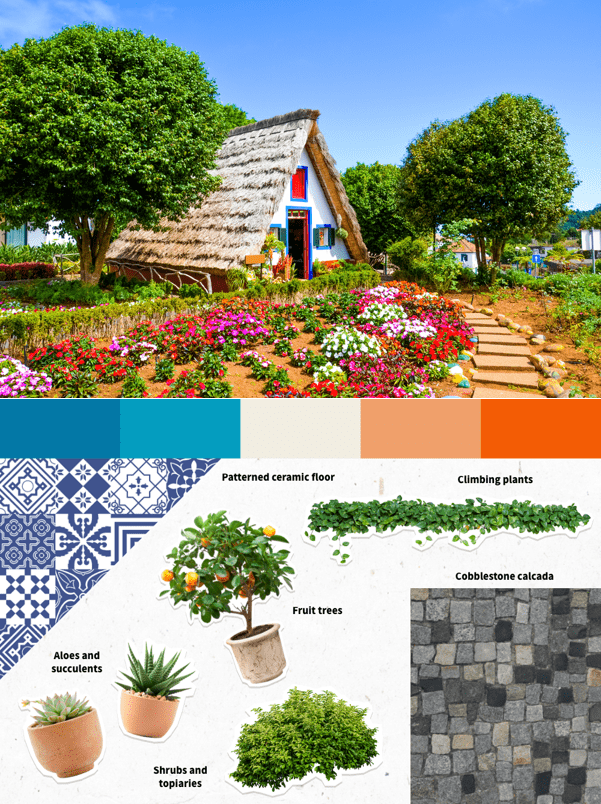
There are a lot of Roman influences in Portuguese gardens which can easily be brought about by neutral colours and lots of stone. You can add colour and apply an authentic Portuguese style with azulejos (blue ceramic tiles) and hints of terracotta.
Opt for hedges, evergreens, raised succulent beds and even climbing plants to provide décor and shade. Fruit trees are also common in Portugal. If you’re wanting to add fruit trees of your own, apple, pear, plum and cherry trees are best for UK climates.
An adapted BBQ area is a great way to encompass Portugal’s love for outdoor dining.
To align with the Portuguese garden style, focus more on creating a green background with the hedges which can be complemented with Portuguese-styled paving (or Calcada), floor tiles, iron furniture sets, outdoor rugs, and outdoor lights. This will contribute to creating that perfect BBQ space.
The Netherlands
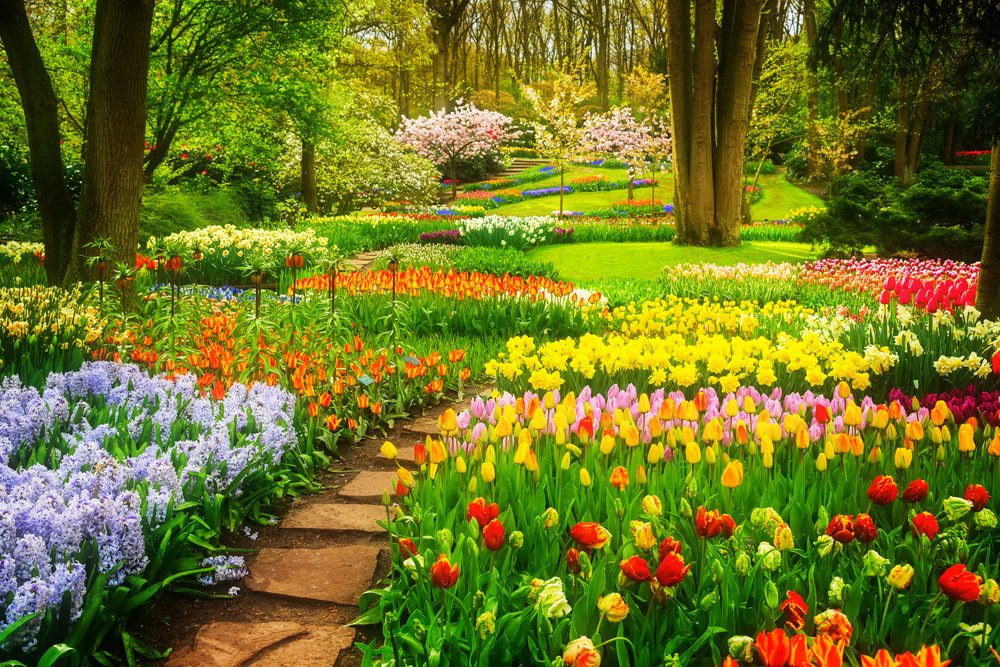
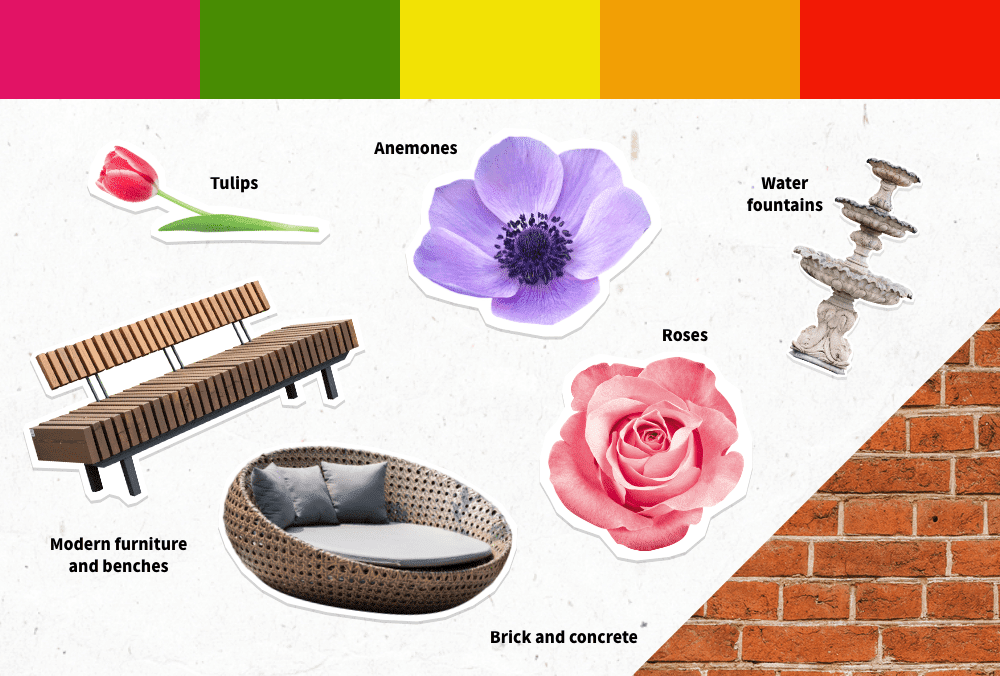
A Dutch garden is all about primary colours, symmetry, and organisation. The national flower is a Tulip, so aim to fill stone and brick planters and flower beds with tulips of varying colours. While tulips are synonymous with Dutch gardens, other flower varieties such as anemones, roses, crocuses, and lots of potted plants will suit. It’s advised not to mix them to keep that authentic, uniform look common in Dutch culture. This can be complemented by contemporary and clean-edged furniture.
Dutch style would suit a smaller garden due to the organised and precise style. That said, bigger gardens can also evoke a Dutch feel with still water features to mimic reflecting pools, commonly found in their public gardens.
Many Dutch gardens are influenced by Dutch landscape artist Mien Ruys, whose style has been described as ‘clear, direct, and barren’.
For more information on how to transform your English garden into your country of choice, you can find the full piece here: https://www.toolstation.com/content/around-the-world-in-10-gardens
Help keep news FREE for our readers
Supporting your local community newspaper/online news outlet is crucial now more than ever. If you believe in independent journalism, then consider making a valuable contribution by making a one-time or monthly donation. We operate in rural areas where providing unbiased news can be challenging. Read More About Supporting The West Wales Chronicle













